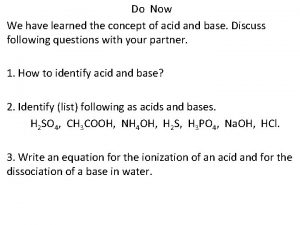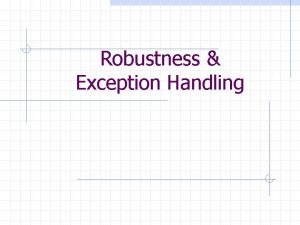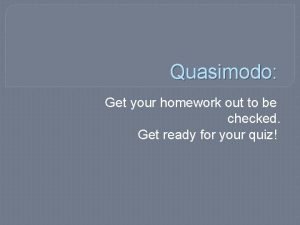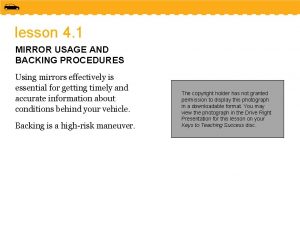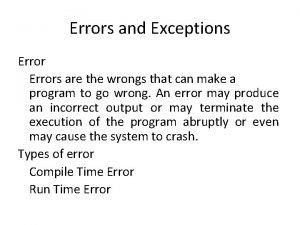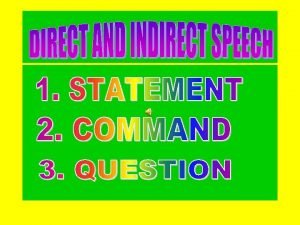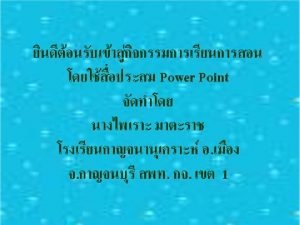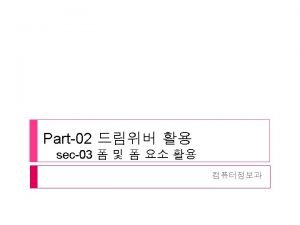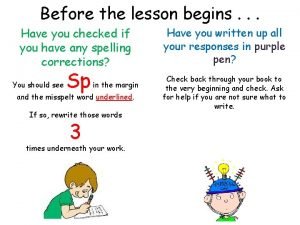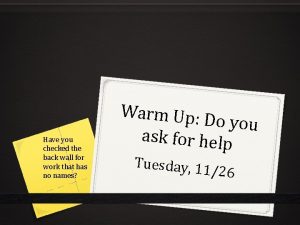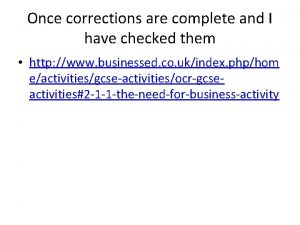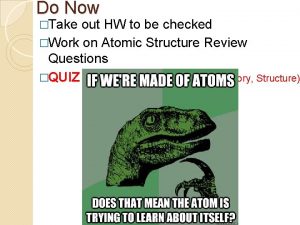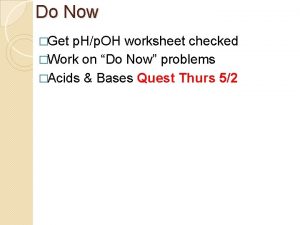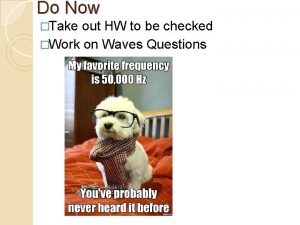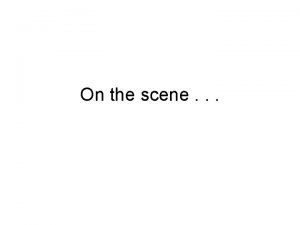CPRAED You have now 1 checked scene and

















- Slides: 17

CPR/AED You have now 1. checked (scene and victim) 2. called for help (called first or fast) What is the third step in emergency care? ? 3. Provide care Check for the ABC’s of life

CPR/AED (A) AIRWAY 1. HOW would you check for an open airway? ? n LOOK n LISTEN n FEEL 2. WHAT are you looking, listening and feeling for? ? 3. How long should you assess this? ? n No more than 10 secs.

CPR/AED 4. If there are no signs of breathing you may need to open the airway 5. How do you open an airway? ? n Head tilt/chin lift method 6. Adult: tilt head backward as far as it will go n Child: tilt back slightly past neutral position n WHY? ? ? n Infant: keep in a neutral position

CPR/AED 7. How would you open the airway of a suspected neck/spinal injury victim? ? ? n Jaw thrust maneuver n Why? ? ? 8. What should you do if the jaw thrust maneuver does not open the airway? ? ? n Use the head tilt/chin lift method n WHY? ?

CPR/AED (B) BREATHING We have established an airway. 9. What should we do next? ? n GIVE 2 RESCUE BREATHS n VIDEO Rescue Breathing 3 mins n Rescue breathing provides O 2 needed to survive until help arrives 10. ADULTS: 1 breath every 5 secs. ****** n INFANTS/CHILD: 1 breath every 3 secs. n

CPR/AED 11. How much air should you breathe into the victim? ? n Enough to make the chest rise and fall What will happen if you over inflate the lungs? Air will escape into the stomach and they will vomit n n

CPR/AED 12. Personal Protective Equipment (PPE’s) for CPR VIDEO masks 3 mins 1. Resuscitation Masks n They create a complete seal over mouth/nose n Can be connected to O 2 n Prevent disease transmission while giving rescue breaths 2. Gloves

CPR/AED n Have students break into pairs/groups and practice establishing airways and providing rescue breaths. n 3 per adult and 3 per infant

CPR/AED 13. What would you do if you can not get air to go into the lungs? ? ? n Reposition the head and try 2 more rescue breaths 14. If the breaths will still not go in, what must you assume? ? ? n Airway obstruction

CPR/AED n AIRWAY OBSTRUCTUION 15. Most common cause of respiratory emergencies What is the universal sign of someone who is choking? ? 16. Clutching the throat

CPR/AED Conscious Choking Adult/Child 17. If victim is coughing/wheezing or able to speak, they can still move air into the lungs n 18. ENCOURAGE THEM TO CONTINUE TO COUGH 19. If victim can not speak or cough, Airway is totally obstructed

CPR/AED 20. CONSCIOUS Choking Infant n Support infant’s head/neck n Lower infant onto your thigh n Keep head lower than chest n WHY? ? ? n Deliver 5 back blows n Deliver 5 chest thrusts 21. Continue until object is dislodged

CPR/AED 22. Total Obstructed Airway of Conscious Adult/Child n 5 back blows n 5 abd. thrusts n DEMONSTRATE n Continue until object is forced out or n Victim becomes unconscious n practice in pairs

CPR/AED 23. Unconscious Choking Adult/Child 25. Use 2 hands in the middle of the chest n Deliver 5 chest compressions n Look for the object 26. If you see it, sweep it out with your index finger n For a child use your little finger n Give 2 rescue breaths n Continue until victim recovers n Demonstrate

CPR/AED 24. Unconscious Choking Infant n Keep 1 hand on the infant’s forehead to maintain an open airway 27. Using 2 -3 fingers in the middle of the chest, n just below the nipple line, n give 5 chest compressions n demonstrate

CPR/AED Look for the object n Grasp the jaw and pull it forward 28. If you see an object: n Using your little finger, slide it along the cheek n If you do not see an object DO NOT DO A FINGER sweep n Give 2 rescue breaths and repeat the process until the object is dislodged n

CPR/AED 29. Chest Compressions for Airway obstruction AND CPR ADULT: 1 ½ -2 inches n CHILD: 1 -1 ½ inches n INFANT ½ -1 inch n
 Now i see it now you don't
Now i see it now you don't Samuel they have rejected me
Samuel they have rejected me Neutralization formula
Neutralization formula Robust programs
Robust programs Take out your homework
Take out your homework Lesson 4 mirror mirror
Lesson 4 mirror mirror Checked jacob chance vk
Checked jacob chance vk Array index out of bound exception is checked or unchecked
Array index out of bound exception is checked or unchecked Hello. jack how's business these days text
Hello. jack how's business these days text Prism with 8 faces
Prism with 8 faces Macbeth summary act 1
Macbeth summary act 1 Macbeth scene 4 summary
Macbeth scene 4 summary You should study hard
You should study hard If+past perfect+would have+past participle examples
If+past perfect+would have+past participle examples Why did rainsford confront zaroff
Why did rainsford confront zaroff The crucible: elizabeth proctor quotes
The crucible: elizabeth proctor quotes Tell me what you eat and i shall tell you what you are
Tell me what you eat and i shall tell you what you are I studied hard because i knew that the test would
I studied hard because i knew that the test would


